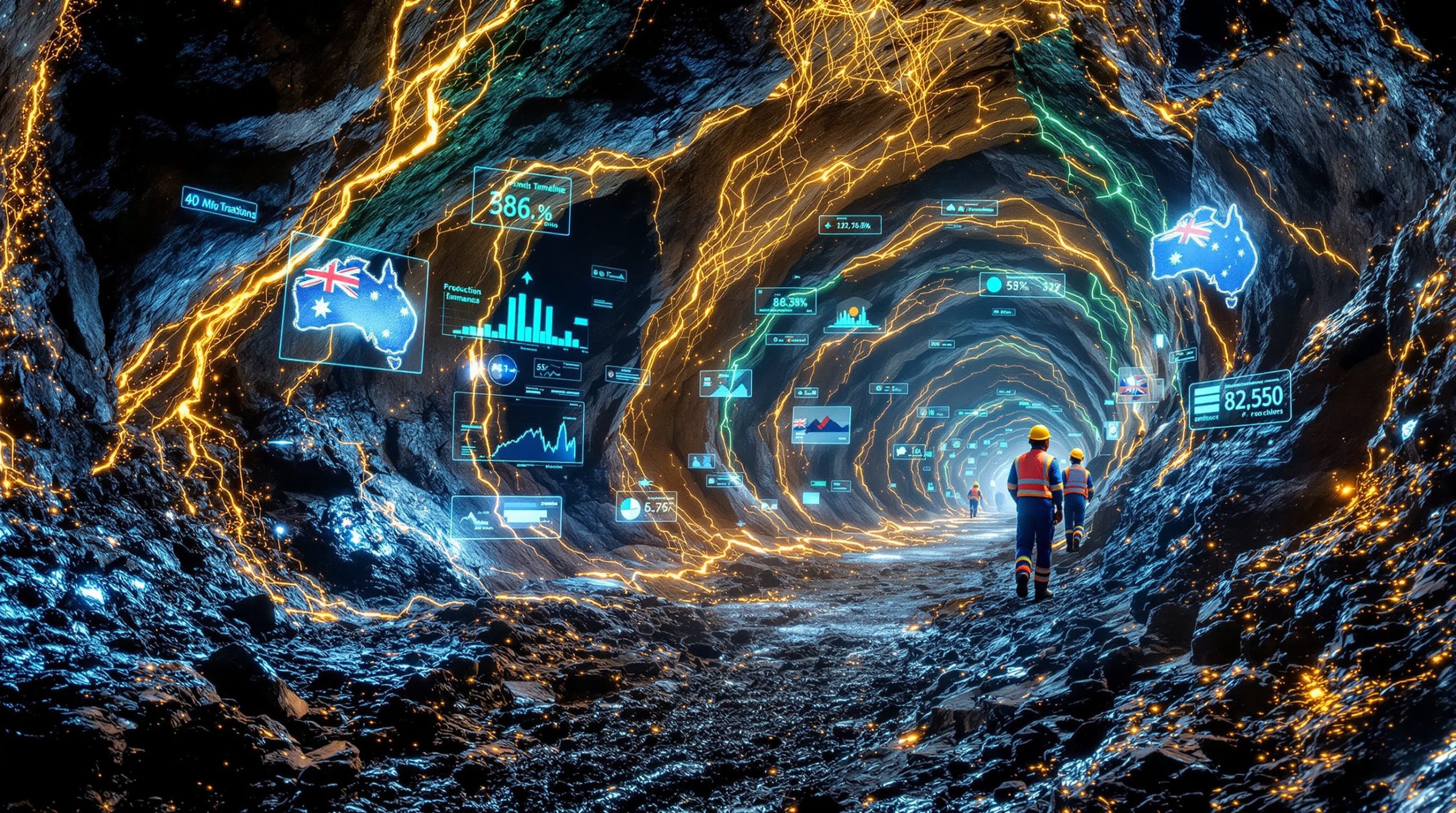Market Dynamics Reshaping Critical Materials Recovery
Global demand for strategic materials continues outpacing traditional supply mechanisms, forcing industrial nations to reconsider fundamental approaches to resource security. The convergence of technological advancement, geopolitical tensions, and environmental pressures creates unprecedented opportunities for secondary material recovery systems. Advanced separation technologies now enable economic recovery of critical elements from waste streams previously considered economically unviable.
China's recent strategic alignment between state-controlled rare-earth operations and secondary materials recovery represents a significant evolution in global supply chain architecture. This consolidation extends beyond traditional mining and refining activities, creating integrated systems that span collection, processing, and overseas resource development under centralised coordination.
Strategic Drivers Behind Rare-Earth Recycling Partnerships
Critical Materials Security Framework
Geographic concentration of processing capabilities creates structural vulnerabilities across multiple industrial sectors. Current global rare-earth processing remains concentrated in limited regions, with China controlling approximately 70% of global processing capacity despite producing only 30-40% of primary rare-earth oxides. This concentration creates single-point-of-failure risks for industries dependent on these materials.
Myanmar and China together account for approximately 98% of heavy rare-earth element processing, demonstrating extreme market concentration. The Herfindahl-Hirschman Index for rare-earth processing exceeds 4,000, indicating very high market concentration that poses systematic risks to global supply chains. Furthermore, the critical minerals strategy initiatives are becoming increasingly important for national security.
Strategic stockpile limitations compound these vulnerabilities. Current U.S. rare-earth strategic stockpiles contain approximately 450 tonnes of dysprosium oxide and 300 tonnes of terbium oxide, insufficient to supply domestic defence and renewable energy sectors for more than 12-18 months during supply disruptions. Traditional reserves cannot address long-term security concerns due to:
- Limited storage capacity for oxidation-sensitive materials
- High storage costs for specialised containment systems
- Degradation of certain rare-earth compounds over extended periods
- Political constraints on stockpile release mechanisms
Circular economy economics demonstrate compelling advantages over primary extraction. Recycling can recover 95-98% of rare-earth elements from high-grade waste streams, compared to 65-75% recovery rates from primary mineral processing. The cost differential remains substantial: recycled neodymium production costs range from $3-5 per kilogram, compared to primary production costs of $8-12 per kilogram.
Environmental cost accounting reveals additional advantages not reflected in current pricing mechanisms. Primary rare-earth extraction generates 2,000 tonnes of radioactive and toxic tailings per tonne of finished rare-earth oxides, while recycling reduces tailings generation by 95-98%. Consequently, the defense materials strategy emphasises the importance of secondary recovery systems.
Technology Convergence Creating Partnership Opportunities
Advanced separation technologies enable economic processing of previously marginal waste streams. Modern hydrometallurgical recycling employs selective leaching processes using dilute acids, followed by precision crystallisation to separate individual elements. Recent innovations combine ion-exchange resins with solvent extraction techniques to achieve separation efficiencies approaching those of traditional pyrometallurgical methods.
Direct leaching of permanent magnet waste achieves 90-95% rare-earth element extraction in laboratory conditions, with commercial pilot plants demonstrating 75-85% efficiency. Temperature control systems using programmable logic controllers reduce impurity co-recovery rates from 15-20% to 5-8%. In addition, AI-driven processing technologies are revolutionising material identification and separation processes.
AI-driven material identification transforms waste stream optimisation economics. Hyperspectral imaging combined with machine learning algorithms can distinguish between different magnet types in mixed electronic waste streams within 3-5 seconds per unit. These systems achieve 92-96% accuracy in identifying and classifying rare-earth-bearing materials, reducing manual sorting costs by 40-60%.
Scalability thresholds determine partnership viability. Recycling economics become positive only after achieving specific processing volumes and feedstock consistency. Below 500-1,000 tonnes annual processing capacity, capital expenditure per unit of material recovered becomes prohibitively expensive, making partnership structures essential for distributing costs across multiple stakeholders.
Global Supply Chain Restructuring Through Strategic Alliances
Vertical Integration Models Across Major Markets
| Region | Partnership Focus | Key Advantages | Market Share Impact |
|---|---|---|---|
| North America | Collection-to-refining integration | Domestic supply chain control | 15-20% independence target |
| Europe | Cross-border recycling networks | Regulatory harmonisation | Reduced Asian dependency |
| Asia-Pacific | State-directed consolidation | Unified resource coordination | Market dominance extension |
China's vertical integration strategy demonstrates comprehensive supply chain control through state coordination. China Rare Earth Group, established in 2021, consolidated six major enterprises to create integrated operations spanning mining, refining, and specialised applications. The organisation controls approximately 35-40% of China's rare-earth mining capacity and processes 50-55% of refined materials.
The recent cooperation agreement between China Rare Earth Group and China Resources Recycling extends this integration into secondary materials recovery. China Resources Recycling's existing operations in scrap metal recovery, combined with state-owned rare-earth processing expertise, creates closed-loop systems spanning domestic waste collection, secondary processing, and overseas resource acquisition.
U.S. strategic partnerships focus on domestic capacity development to address critical infrastructure requirements. The Department of Defense has identified rare-earth supply chain security as essential infrastructure, yet current domestic capacity meets only 10-15% of demand. Energy Fuels' Mountain Pass operation processes approximately 12,000-15,000 tonnes of rare-earth oxides annually, representing the primary domestic source.
European Union circular economy frameworks target systematic dependency reduction through coordinated recycling initiatives. The Critical Raw Materials Act allocates €1.2 billion for recycling infrastructure development, targeting 25% of rare-earth demand to be met through recycling by 2030. However, the CRM facility supply chains require substantial investment and coordination across member states.
Competitive Positioning Through Technology Partnerships
Proprietary process licensing creates market access mechanisms while posing intellectual property risks. Leading recyclers protect competitive advantages through closely guarded process parameters including acid concentration profiles, ion-exchange specifications, and crystallisation conditions. These processes achieve 92-98% separation efficiency under optimal conditions but degrade to 70-80% if parameters vary by ±5%.
Joint venture structures distribute risk while enabling technology transfer. Typical capitalisation models require:
- Initial plant and equipment: $50-150 million (capacity-dependent)
- Working capital: $10-25 million
- Technology licensing: $5-15 million
- Shared infrastructure reduces per-unit capital requirements by 30-40% compared to standalone operations
Exclusive supply agreements create competitive advantages through reduced price exposure and guaranteed feedstock access. However, these arrangements also create market rigidity and customer concentration risks when single customers represent over 40% of partnership revenue. For instance, successful rare-earth recycling strategic partnership models often incorporate comprehensive supply agreements to ensure operational stability.
Economic Viability Models for Recycling Partnerships
Revenue Stream Diversification Strategies
Primary recovery economics focus on high-value permanent magnet waste streams. NdFeB permanent magnet scrap trades at $35-55 per kilogram, significantly above primary rare-earth oxide prices of $8-12 per kilogram. Processing one tonne of magnet scrap yields:
- 170-180 kg of rare-earth oxides (primarily neodymium, praseodymium, dysprosium, terbium)
- Recovery value: $12,000-18,000 per tonne
- Processing costs: $4,000-7,000 per tonne
- Gross margin: $5,000-11,000 per tonne (50-60% gross margin)
Electric vehicle motor magnets represent the highest-quality feedstock source. Each EV motor contains 300-500 grams of rare-earth permanent magnets, yielding:
- Neodymium: 15-18 grams per motor
- Dysprosium: 2-3 grams per motor
- Total recovered value: $45-75 per motor magnet (2024 pricing)
Secondary material monetisation targets lower-grade sources requiring intensive processing. Electronics waste contains 50-200 ppm rare-earth elements, becoming economically viable only at processing scales exceeding 500-1,000 tonnes annually. Data centre equipment yields 2-5 kg of recoverable oxides per tonne processed, with recovery values of $2,000-4,000 per tonne and processing costs of $1,500-3,000 per tonne.
By-product value capture enhances overall economics through cobalt, nickel, and other critical metal co-recovery. Mixed electronic waste streams often contain valuable secondary materials that improve processing economics when captured systematically. Moreover, the industry innovation trends are driving increased efficiency in multi-metal recovery systems.
Strategic partnerships in rare-earth recycling typically require $50-200 million in initial capital deployment, with break-even points achieved at 500-1,000 tonnes annual processing capacity. Return profiles depend heavily on feedstock security and downstream market access agreements.
Risk Mitigation Through Partnership Structures
Feedstock supply guarantees provide operational stability through long-term collection agreements and volume commitments. Successful partnerships establish:
- Multi-year supply contracts with automotive OEMs and electronics manufacturers
- Geographic collection networks covering multiple metropolitan areas
- Quality specifications ensuring consistent input material characteristics
Technology risk sharing distributes development costs and intellectual property arrangements across multiple partners. Joint development programmes reduce individual partner exposure while accelerating innovation timelines. Furthermore, rare-earth recycling strategic partnership structures enable access to specialized capabilities that individual companies cannot develop independently.
Market access diversification reduces dependency on single industry sectors. Partnerships targeting automotive, electronics, and defence applications create revenue stability through multiple demand sources with different cyclical patterns.
Partnership Models Delivering Sustainable Competitive Advantages
Integrated Collection-Processing Networks
Geographic coverage optimisation requires strategic facility placement considering transportation costs, regulatory environments, and feedstock density. Successful networks establish collection points within 200-300 kilometres of processing facilities to minimise logistics costs while maintaining material quality during transport.
Feedstock quality standardisation ensures consistent processing efficiency and output specifications. Industry-leading operations implement:
- Material classification systems using hyperspectral imaging
- Pre-processing protocols removing contamination and non-target materials
- Quality control checkpoints maintaining input specifications
Processing capacity scaling employs modular expansion approaches enabling incremental capacity increases. Modular systems reduce initial capital requirements while providing flexibility to respond to market demand changes.
Cross-Industry Collaboration Frameworks
Automotive sector partnerships focus on EV battery and motor magnet recovery programmes. Major automotive manufacturers increasingly establish take-back programmes for end-of-life vehicles, creating reliable feedstock sources for recycling partners. Additionally, rare-earth recycling strategic partnership agreements often include recycling considered key to US rare earth magnet independence initiatives.
Electronics industry alliances target consumer devices and data centre equipment processing. Technology companies implement product stewardship programmes providing structured material flows for recycling operations.
Defence contractor relationships address specialised military equipment recovery requirements. Defence applications often involve higher-grade materials and stricter security protocols, creating premium pricing opportunities for qualified recyclers. For instance, ERI and REElement partner to recycle rare earth elements domestically, demonstrating successful cross-industry collaboration.
International Joint Venture Structures
| Success Factor | Weight (%) | Measurement Criteria | Industry Benchmark |
|---|---|---|---|
| Feedstock security | 35% | Multi-year supply contracts | 5+ year agreements |
| Technology differentiation | 25% | Recovery rate efficiency | >85% extraction rates |
| Market access | 20% | End-user relationships | 3+ major customers |
| Regulatory compliance | 20% | Environmental standards | Zero violations record |
Successful international partnerships establish clear governance structures addressing:
- Intellectual property ownership and licensing arrangements
- Technology transfer protocols and confidentiality protections
- Regulatory compliance across multiple jurisdictions
- Currency and political risk management strategies
Geopolitical Dynamics Shaping Partnership Strategies
National Security Considerations in Alliance Formation
Critical infrastructure protection requirements drive domestic processing capability development. The U.S. Department of Defense classifies rare-earth processing as essential infrastructure requiring domestic capacity for national security applications. Current regulations require defence contractors to demonstrate domestic sourcing for critical materials in sensitive applications.
Technology transfer restrictions create partnership constraints through export control compliance requirements. The Export Administration Regulations restrict transfer of certain separation technologies to foreign entities, limiting international collaboration options for U.S.-based recyclers.
Strategic stockpile integration provides coordination mechanisms between government reserves and commercial recycling operations. Emergency allocation protocols enable recyclers to process government-owned scrap materials during supply disruptions while maintaining commercial operations.
Trade Policy Implications for Partnership Structures
Tariff optimisation strategies influence value-added processing location decisions. Partners often establish processing facilities in jurisdictions offering favourable trade agreements or tariff exemptions for finished materials.
Rules of origin compliance affects domestic content requirements and certification processes. Recycled materials must meet specific processing thresholds to qualify for domestic sourcing preferences in government procurement.
Sanctions risk management requires supply chain diversification and alternative sourcing capabilities. Partnerships establish contingency protocols addressing potential restrictions on material flows from specific regions or entities.
Future Scenarios Determining Partnership Success
Demand Growth Trajectory Modelling
Electric vehicle adoption rates drive magnet demand forecasting through 2035. Current projections indicate global EV sales reaching 30-40 million units annually by 2030, creating substantial permanent magnet demand and corresponding recycling opportunities as first-generation EVs reach end-of-life status.
Renewable energy deployment accelerates wind turbine rare-earth requirements. Offshore wind development particularly drives demand for high-performance permanent magnets requiring dysprosium and terbium for temperature stability and corrosion resistance.
Technology miniaturisation trends affect electronics sector consumption patterns. Smartphone and tablet production continues growing globally, while data centre expansion creates concentrated sources of recoverable materials in specific geographic regions.
Supply Chain Disruption Scenarios
Mining capacity constraints emerge from declining ore grades and environmental restrictions. Traditional rare-earth deposits experience grade decline of 2-3% annually, increasing primary production costs and improving recycling economics competitiveness.
Transportation bottlenecks create vulnerability points in international material flows. Container shipping capacity limitations and port congestion affect material flows between processing facilities and end-users.
Regulatory environment shifts impact environmental compliance costs and operational requirements. Stricter environmental standards for primary mining operations improve recycling competitiveness while potentially increasing processing compliance costs.
Competitive Landscape Evolution
What makes rare-earth recycling partnerships strategically valuable?
Rare-earth recycling partnerships create strategic value through three key mechanisms: (1) Supply chain security by reducing dependence on geographically concentrated primary sources, (2) Economic efficiency through shared infrastructure and technology costs, and (3) Market positioning advantages via exclusive feedstock access and processing capabilities.
Technology advancement continues reshaping competitive dynamics through improved separation efficiency and reduced processing costs. Partnerships investing in next-generation processing technologies establish sustainable competitive advantages through superior economics and processing flexibility.
Market consolidation trends indicate continued partnership formation as smaller operators seek scale economies and risk distribution. Industry maturation favours integrated players with comprehensive collection, processing, and market access capabilities.
Performance Indicators for Partnership Evaluation
Operational Metrics and Benchmarking
Recovery rate efficiency serves as the primary operational performance indicator. Industry-leading operations achieve 85%+ extraction rates for target elements from high-grade feedstock, while lower-grade materials typically achieve 60-75% recovery rates.
Processing cost optimisation focuses on per-tonne economics versus primary production alternatives. Successful partnerships maintain processing costs below $7,000 per tonne for high-grade materials and below $3,000 per tonne for lower-grade streams.
Capacity utilisation rates indicate operational efficiency and market demand alignment. Target utilisation rates of 75-85% balance operational efficiency with flexibility to accommodate demand fluctuations.
Strategic Value Creation Measurement
Market share capture quantifies domestic supply chain penetration and dependency reduction. Partnerships target 15-25% market share in domestic markets within 5-7 years of commercial operation.
Technology advancement metrics include patent portfolio development and licensing revenue generation. Leading partnerships file 5-10 patent applications annually covering process improvements and equipment innovations.
Risk reduction quantification measures supply chain resilience improvement through diversified sourcing and processing capabilities. Partnerships target 30-50% reduction in single-source dependencies within their operational scope. Consequently, rare-earth recycling strategic partnership evaluation requires comprehensive assessment across multiple performance dimensions.
Disclaimer: This analysis involves forecasts, market projections, and speculative elements regarding future rare-earth recycling market development. Actual results may vary significantly from projections due to technological, regulatory, or market changes. Investment decisions should consider comprehensive due diligence and professional consultation.
Ready to capitalise on the critical materials recycling boom?
Discovery Alert's proprietary Discovery IQ model delivers real-time notifications on significant ASX mineral discoveries, including companies developing advanced recycling technologies and secondary recovery systems for critical materials. Explore how major mineral discoveries can generate substantial returns and begin your 30-day free trial today to position yourself ahead of this rapidly evolving market.




